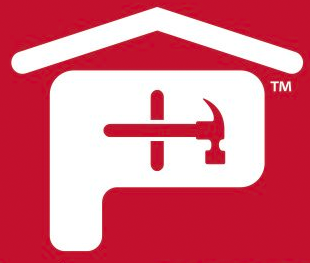
While shingles are the most visible element on a roof's surface, a complete roofing system is made up of components designed to work together to protect a home from the elements. It's important to understand the role of each product in a system, so contractors can choose the best options for the installation.
What goes under shingles matters a great deal. For decades, traditional felt was the standard underlayment for roofing. Felt underlayment is an organic layer comprised of asphalt saturated paper laid over a roof deck, before the shingles are installed.
Felt underlayment is reasonably priced and readily available in all markets. Installing felt under shingles offers an additional layer of protection against inclement weather and dampens sound transfer.
In the South and Midwest, felt should only be exposed to the elements for a short amount of time, as its water resistance is dependent on its weight. Felt underlayment can be vulnerable should shingles become loose or detached. While these problems are possible over long periods of time with almost any underlayment, traditional felt is most susceptible to weather issues.
Introducing Peel and Stick Underlayment
Manufacturers now offer specialty underlayment options with superior performance features. One of these newer products is "peel and stick" or self-adhesive (SA) underlayment. Peel and stick underlayment is made of a layer of high-density polyethylene or polyester saturated in modified bitumen, which is a blend of rubberized polymers and asphalt. The combination of these materials produces an underlayment that is more tear resistant, elastic, and durable than traditional felt.
When it comes to rain or snow, peel and stick underlayment provides a secondary layer of waterproofing protection that helps prevent damage caused by ice dams and windblown rain. It creates a watertight barrier that provides continuous protection, year after year.
Designed For Lasting Protection On Any Roof
Because of the advanced materials utilized in the manufacturing of peel and stick underlayment, it has a longer life compared to felt underlayment, making it ideal for use in roofing systems designed to offer longer protection. Atlas Roofing's WeatherMaster line of peel and stick underlayment is manufactured with SBS (Styrene Butadiene Styrene) technology, combining high performance with lasting durability.
Suitable for use with, metal, concrete, plywood, wood composition board, and gypsum, peel and stick underlayment can be used on partial roof zones or as part of a complete roofing system. Its simplified installation makes covering intricate locations and bridging critical transitions easier, including eaves, rakes, and valleys. Plus, many peel and stick underlayment products are fire-resistant, a definite advantage for safety and security.
Invest In Year-Round Coverage and Peace Of Mind
The benefits offered by peel and stick underlayment make it worth the additional investment. The level of protection they provide, the durability and longevity, and the fire-resistant qualities all combine to make peel and stick a worthwhile investment.
Atlas Roofing offers a complete line of peel and stick roof underlayment products, including WeatherMaster® Film, WeatherMaster® Granular, WeatherMaster® 200, WeatherMaster® Polyseal™, and WeatherMaster® TU Ultra. To learn more about these self-adhesive roofing underlayment products, click here.



 Gear!
Gear! PRO LOGIN
PRO LOGIN